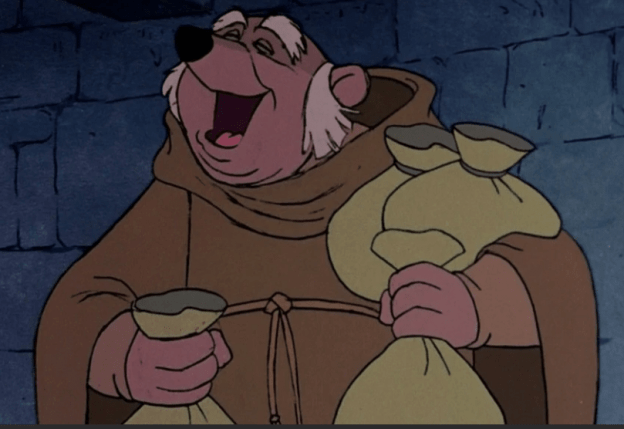Here is a by-catch snippet from a King’s Bench plea roll which might appeal to the more train-spotting completist type of Robin Hood fan (not judging you!) … what seems to be an additional reference to Robert Stafford, naughty Sussex chaplain, who conducted a life of crime under the alias Friar Tuck (or, at least, a reference to a Friar Tuck being up to no good in Sussex).[i]
The name of Stafford (if that’s who this was – as seems likely) is not mentioned, but the description of the offence in the KB plea roll for Michaelmas term 1421 (KB 27/642 m. 32 (AALT IMG 305) might be of interest: at Lewes in 1420, it was presented that Robert Southe of Laughton in co. Sussex, gentleman, Thomas Wodhacche of Horsham, yeoman, and John Pyttekene of Laughton, yeoman, on February 1417, at Plumpton in a place called Lynterygge, with weapons including bows and arrows, their faces hidden, and painted with various colours (make up or camouflage paint? RuPaul’s Drag Race or Celebrity SAS: Who Dares Wins?) beat up Walter atte Brome and Simon Martyn, shouting, amongst other things, that they were the servants of their reverend master, Friar Tuck – and they rampaged around the countryside for some time, terrifying the populace.
There is something of the carnivalesque about this, and perhaps the presence of the ‘gentleman’ amongst the gang suggests that this was not quite a band of desperate starving men. Nevertheless, this seems to be a tale of violence, at some distance from the true story of Robin Hood (which, as we all know, is about cute Disney animals in a forest).
Anyway – hope that is useful to somebody. Off to ride through a glen … or would be, if Covid permitted.
GS 13/2/2021
[i] See Holt, Robin Hood (London, 1982) 58, for reference to this man and his band of followers in 1417 and 1429 (CPR 1429-36, 10) Note that current circumstances mean no library access, so I am fairly sure I haven’t seen this reference before, but that doesn’t mean it isn’t already ‘out there’ somewhere! For more Robin Hoody goodness from the same time – clearly a key point in the Robin Hood myth-making – see Seipp 1429.051 http://BU Law | Our Faculty | Scholarship | Legal History: The Year Books : Report #1429.051 For another 15th C emulation of Robin Hood and co., see TNA SC8/27/1317A
